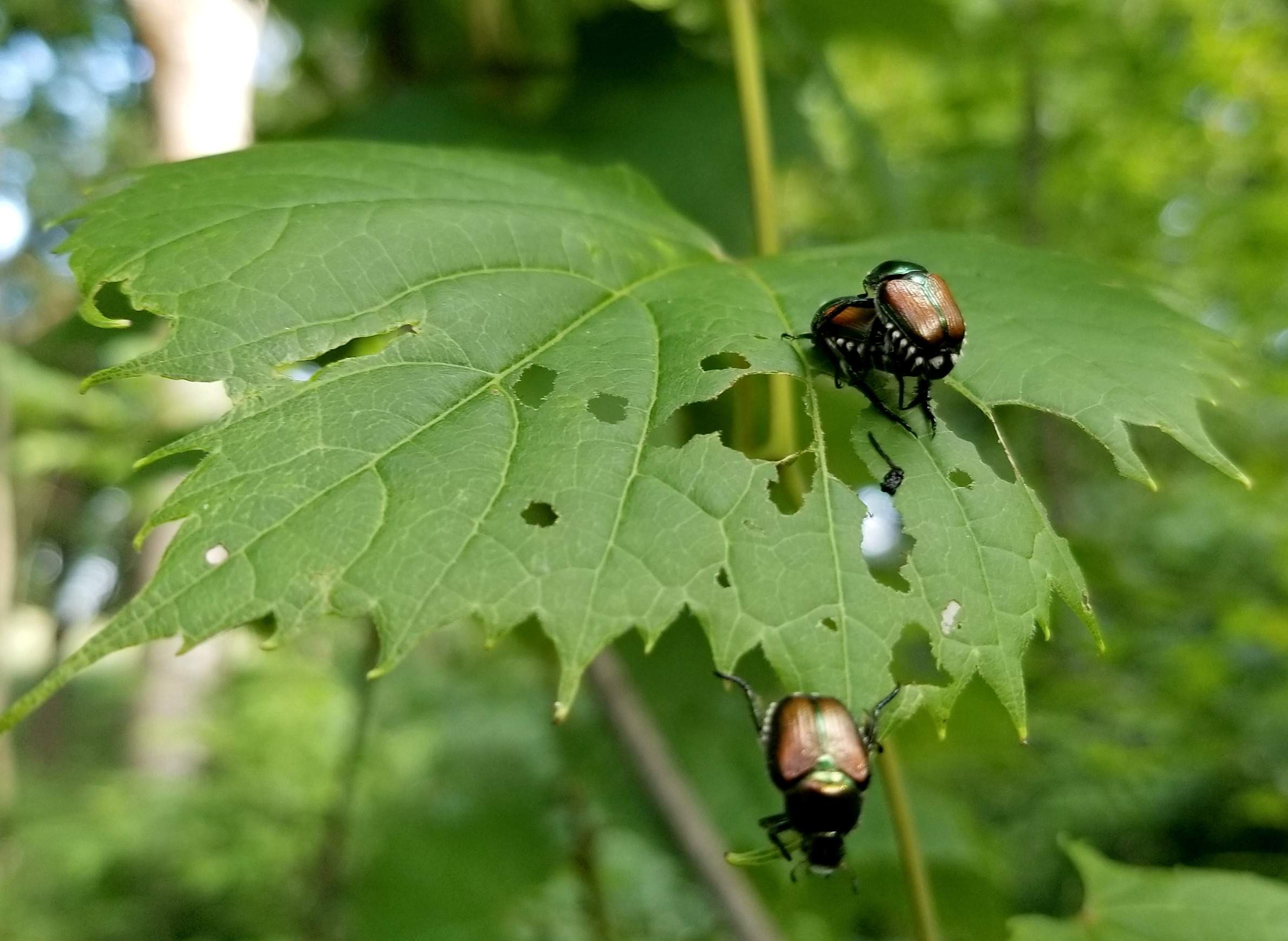
Japanese beetles are common garden pests in Wisconsin.

Japanese beetles are common garden pests in Wisconsin.
The Japanese beetle (Popillia japonica) population in Wisconsin typically peaks in mid-summer. This invasive insect is a defoliating species that devours multiple landscape and garden plants.
Adult Japanese beetles are half an inch long with shiny metallic green bodies, coppery brown wings and tufts of white hairs surrounding their abdomens. During its active period from mid to late summer, females lay their eggs on moist ground. After about two weeks, the eggs hatch white grubs, which attack the roots of turf grass in spring and fall.
Here are answers to five common questions about managing Japanese beetle in gardens.
My mature birch tree leaves are completely devoured by Japanese beetles. Is the tree going to come back next spring?
Mature trees are tolerant to the feeding damage of adult beetles and should have accumulated enough energy by mid-summer to initiate bud development for the following spring. If the tree is devoured continuously over a few consecutive years, boosting its health by adding a slow release fertilizer in early summer might help to improve the tree's vigor and bud development.
Are there are any safe ways to control the Japanese beetle on my rose bush without harming bees?
If the number of beetles is low, they can be picked by hand and drowned in soapy water. Early morning is the best time to shake the beetles off canes, as they are bit sluggish. Another option is to use a floating row cover that can act as a physical barrier, preventing these beetles from attacking the plant. A floating row cover should be draped on the top of the plant and its edges pinned to the ground.
How effective are traps in controlling Japanese beetles?
Commercial traps for Japanese beetles contain female sex pheromone lure that attracts male beetles as well as a sweet scent lure that attracts both males and females. The pheromone lure is powerful enough to attract thousands of beetles every day from a far off distance, easily overfilling a trap's container. Those excess beetles can potentially devour the landscape plants in a trap's vicinity, mate and lay eggs. Japanese beetle traps will lead to more damage to a landscape than controlling the insects.
My summer-bearing raspberries are close to the harvesting stage. How can I prevent Japanese beetles from attacking the fruits and leaves?
The fruit shouldn't be allowed to overripen on the canes. Short residual organic insecticides containing pyrethrins (branded PyGanic) as an active ingredient will deter Japanese beetles. Otherwise, a floating row cover can be laid on top of raspberry plants in the early afternoon to prevent a beetle attack.
Can milky spore disease help to control Japanese beetle grubs in lawns?
Biological products like milky spore diseases (Bacillus papillae) and fungal pathogens (such as Beauveria bassiana and Metarhizium) have shown inconsistent test results in controlling the Japanese beetle grubs in field studies. In many scenarios, the effectiveness of the biological products largely depends on the environmental conditions. In field trial studies in Kentucky and Ohio, the infectious rate of milky spore disease on Japanese beetle grubs was about 20-25 percent.
More information on dealing with Japanese beetles and other garden pests is available from University of Wisconsin-Extension Horticulture and the UW-Extension Master Gardener Program.
Vijai Pandian is a horticultural agent and educator for the University of Wisconsin-Extension Brown County. This article is adapted from an item originally published by the Green Bay Press Gazette.